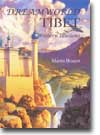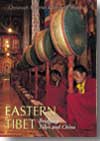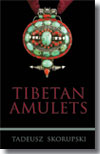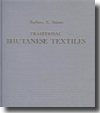| Our Publications | ||
| Books by Title | ||
| Books by Author | ||
| Books by Country | ||
| E-books | ||
| About | ||
| Orchid Press E-books | ||
| Distributed E-books | ||
| Our Bookshop | ||
| About Us | ||
| Browse Shop | ||
| How to Buy | ||
| Contact Us | ||
| WE BUY BOOKS AND LIBRARIES | ||
|
||
Orchid Books
Orchid Books is a collection of well illustrated books, appealing to both the layman and the scholar, and written by specialists.| Central & North-East Asia | Burma | South Asia |
| Thailand & South-East Asia | Himalaya & Tibet | China |
Himalaya & Tibet
 |
Dreamworld Tibet: Western Illusions by Martin Brauen 1st English edition 2004. 296 pp., 96 monochrome and 167 colour illustrations 290 x 210, Hardcover ISBN-10: 974-524-051-6 $60.00 ISBN-13: 978-974-524-051-3 In this lively new work on conceptions of Tibet in Western European and North American societies, anthropologist Martin Brauen paints a damning portrait of misinterpretation, trivialization and political and commercial exploitation of a rich and ancient culture. Starting with idealistic adventurers in search of a Himalayan Utopia from the 17th century onward, Brauen’s most disturbing portrayals are the distortions of 20th century neo-Nazis, Hollywoodmoguls and the commercial-industrial complex. The author analyses and describes the cynical exploitation, up to the present, of Tibetan Buddhism—a fundamental objective of which is the elimination of human greed—to further Western commercial aims. Illustrations include a diverse and at times shocking collection of commercial ‘packaging’ of Buddhism, its spiritual icons and leaders to sell products ranging from cars to cosmetics, tee-shirts, ashtrays and even soft pornography. “an important, rich and path-breaking work” (A. Goodrich, Journal of Global Buddhism) [Read a review] |
 |
Eastern Tibet: Bridging Tibet and China by Christoph Baumer & Therese Weber First English Edition 2005. xii, 244 pp., 4 maps, 13 monochrome and 256 col. pl., notes, bibliography, index, 310 x 240, hardcover ISBN-10: 974-524-064-8 $60.00 ISBN-13: 978-974-524-064-3 Eastern Tibet is the cradle of Tibetan culture. Here, in Kham and Amdo, due both to an intense exchange with the neighbouring regions beginning in Neolithic times and to the inward migration of various peoples, several cultural forms emerged. Archaeological finds from tombs related to Hellenistic, Iranian, Sogdian and Chinese cultures testify to the cultural richness of this area in those days. In the first millennium of our era Eastern Tibet reached international relevance as three branches of the Silk Road passed through its borders. Eastern Tibet, since the 9th century CE, has also been a centre of religious spirituality, which has maintained its significance until the present day. The almost 10,000 nuns and monks studying at the monastic University of Larung Gar-unfortunately partially destroyed in 2001-and the Amdo roots of present XIV th Dalai Lama, are the most prominent testimonials of this centuries-old tradition. The holistic philosophy of life of the people of Eastern Tibet is shaped by the region’s spirituality, its untouched landscapes and its precious cultural treasures. This book, illustrated with more than 250 extraordinary colour photographs, is the first study dedicated solely to the culture of Eastern Tibet. It fills an important gap, not the least because more Tibetans live in Kham and Amdo than in the so-called ‘Tibetan Autonomous Region’. The thoroughly researched text is the result of fieldwork conducted by both authors over a period of several years. The brilliant and inspiring images feature people, landscapes and cultural objects often documented for the first time. |
 |
The Gods are Leaving the Country Art Theft from Nepal by Jürgen Schick First English translation 1997. 212 pp., 192 plates in b & w and colour. 29 x 22 cm. ISBN-10: 974-8299-19-8 Softbound: $35.00 ISBN-13: 978-974-8299-19-8 ISBN-10: 974-8299-20-1 Hardbound: $48.00 ISBN-13: 978-974-8299-20-4 A meticulous record of the theft of art from Nepal over the past two decades. The book is well illustrated with photographs of the many sites containing priceless works of art, many of which were items of active worship, before and after the removal from the actual locations. Wood, stone and metal objects are depicted and described. A massive indictment of the ruthless international art thieves and their accomplices. [Read a review from The Illicit Antiques Research Centre] [Read a review from The South China Morning Post] |
 |
The Little Luminous Boy The Secret Oral Tradition from the Land of Zhang-Zhung depicted on two Tibetan Paintings by Samten G. Karmay 1998. xix, 120 pp., 68 full colour plates, 6 tables and diagrams. 22.5 x 19.5 cm. ISBN-10: 974-8299-07-4 Softbound:$29.00 ISBN-10: 974-8299-06-6 Hardbound: $39.00 A detailed exposition of the Bön secret oral tradition from Zhang-Zhung in western Tibet, and its transmission by recognized masters up till the present. Richly illustrated with exquisite details from two thangka paintings. A pioneering work by a highly renowned scholar, of interest to art historians as well as students of meditation and Tibetan religious and cultural traditions. |
 |
Living Fabric Weaving among the Nomads of Ladakh Himalaya by Monisha Ahmed 2002 192 pp., 9 b & w plates, 178 color plates, 3 maps. 29 x 22 cm., hardbound. ISBN-10: 974-8304-87-6 $50.00 ISBN-13: 978-974-8304-87-8 This is the first study of the tradition of weaving among the nomadic pastoralists of Rupshu, in eastern Ladakh. Weaving touches all aspects of life in Rupshu, where both women and men weave, each on a different loom. Local narrative states that the craft of weaving was bestowed upon Rupshu by the gods, and thus all feats related to it have a close connection to the sublime. This book documents and analyses the ways in which fibres, weaving, and textiles are symbolised, constructed, and experienced in Rupshu where themes such as gender, kinship, hierarchical and spatial relations find ready expression through the design and making of cloth. Through her work the author traces the relationship between livestock, weaving, social and symbolic structures in order to understand the multitude of contexts within which wool-oriented activities exist. Richly illustrated, this book will appeal to those with an interest in textiles, nomads, gender studies, and the Himalaya. [Read a review from The Cabridgeshire Guild] [Read a review from the Centre for the Performing Arts in Mumbai, India] [Read a review from the Textile Society of America] |
 |
Of Wool and Loom The Tradition of Tibetan Rugs by Trinley Chodrak and Kesang Tashi 2000. 160 pp., richly illustrated with 154 colour plates. 29 x 22 cm. ISBN-10: 974-8304-15-9 Softbound $35.00 ISBN-13: 978-974-8304-15-1 ISBN-10: 974-8304-13-2 Hardbound $48.00 ISBN-13: 978-974-8304-13-7 The book first presents a brief history of Tibetan carpet and textile weaving, from their early origins, to ‘planted pile’ textiles, Drumste knotted-pile carpets of the Wangden Valley, and the warp-backed rugs of the Lhuntse region. It then traces the emergence of Tibet as a commercial carpet-weaving centre and outlines steps in learning the art of weaving, from apprentice to master-weaver. In a final chapter, the authors give an account of the wide range of uses of Tibetan rugs: by nomads, the aristocracy, and the cavalry, as well as their ecclesiastical and equestrian uses, and their use as floor rugs. The work includes 124 beautiful colour plates of rugs, showing details of their intricate designs and rich colours, accompanied by detailed descriptions of each. The authors are both natives of the region; not only are both considered to be eminent scholars in Tibetan Studies, but one holds the important position of Director of the Tibetan Museum, while the other is a prominent founder and promoter of sustainable enterprises in Tibet through commercial carpet and wool handicraft production, forestry conservation and ecotourism. [Read a review from The Centre of Tibetan Studies] [Read a review from Hali] [Read a review from The Journal of Weavers, Spinners and Dyers] |
 |
The Sulima Pagoda East Meets West in the Restoration of a Napalese Temple Edited by Erich Theophile and Niels Gutschow 2003. 150pp., b/w plates. 28 x 22 cm. Softbound. ISBN-10: 974-524-018-4 $24.95 ISBN-13: 978-974-524-018-6 Twenty-nine years of international participation in historic preservation in Nepal’s Kathmandu Valley has revealed significant differences in restoration approaches to historical buildings, some controversial. to explore this important subject nine experts on conservation here discuss and present their views, focusing on the Sulima Temple in the Patan Darbar Square, possibly the oldest intact multitier pagoda in the Kathmandu Valley. The tiny, monument-studded Kathmandu Valley serves as an ideal laboratory for such investigations, not only for its historical riches, but also for its numerous collaborations between local and international actors in a Hindu Kingdom, a place where the medieval confronts the modern on a daily basis. [Read an article about the restoration of the Sulima Pagoda] |
 |
Tibet’s Ancient Religion Bön by Christoph Baumer 2002 200pp., colour plates throughout. 31 x 23 cm., hardbound. ISBN-10: 974-524-011-7 $60.00 ISBN-13: 978-974-524-011-7 Until well into the eighth century, Bön was the dominant religion and culture on the roof of the world; it is in essence the belief system of ancient Tibet. From the second half of the eighth century onward, Bön was superseded by Buddhism, which had traveled north from India, and the two religions came to influence each other in both doctrine and ritual. In spite of the eventual dominance of Buddhism through its position as the state religion, however, a reformed Bön school has been able to assert itself down to the present. Its tradition continues to remain alive in a few monasteries as well as in visible signs of Tibetan popular religion, including prayer flags and spirit traps, temple and mountain circumambulations, death and marriage rites, oracle techniques, and countless religious rituals. In fact, it may be reasonably asserted that Tibetan culture cannot be completely understood without a knowledge of Bön practices. This book takes the reader to secluded monasteries and sacred sites of the Bön religious community. With its thoroughly informed text and more than 200 photographs of Bön monasteries, lamas, and sacred sites, most undocumented until now, this volume introduces the myths and culture of ancient Tibet. The preface, written by the spiritual head of all Bönpo, confers additional authority on the work, while its notes, maps, index, and an extensive bibliography make it essential reading for anyone with an interest in Tibet or Eastern religions. [Read a review from Asian Philosophy Magazine] [Read a review from Oriental Art Magazine] |
 |
Tibetan Amulets by Tadeusz Skorupski Preface by Per Kværne. 1984, 2000, 2009. 134pp., 2 col. & 5 b/w pl., 211 b/w ill. 21.5 x 14 cm., softcover. ISBN-10: 974-524-120-2 $23.00 ISBN-13: 978-974-524-120-6 A systematic study of the Tibetan charms and amulets, mantras and cakras that have afforded their wearers protection for centuries and which remain a living tradition today. Drawing from indigenous works of the 19th century, the author illustrates and explains 109 amulets and their accompanying mantras, as well as 102 cakras, primarily associated with the Nyingma-pa and Bon traditions. The author also employs the amulets and cakras to reveal details of the myriad gods, demons and other supernatural beings—many incorporated into Buddhism from earlier belief systems—that comprise the Tibetan pantheon. |
 |
Tibetan Rugs by Hallvard Kåre Kuløy 1982, reprinted 1983, 1986, 1989, 1995. x, 236 pp., 265 colour and 6 b & w plates, 117 b & w ill., 1 map. 21 x 19 cm., hardbound with silk binding. ISBN-10: 974-8299-94-5 $45.00 ISBN-13: 978-974-8299-94-5 This, the first comprehensive classification of the Tibetan rugs, presents a coherent picture of the rug tradition of the Land of Snows. 258 rugs are illustrated in full colour, accompanied by measurements and details as to the weaving techniques, knot counts, and so forth. The book has been regularly reprinted since its appearance in 1982, and remains a basic reference work and study tool for amateur collectors, rug traders and the interested public. [Read a review] |
 |
Tibetan Sacred Art The Heritage of Tantra by Detelf Ingo Lauf 1979, 1995. 230 pp., including 86 full page colour plates. 30 x 24 cm., softbound. ISBN-10: 974-8299-95-3 $40.00 ISBN-13: 978-974-8299-95-2 One of the earliest comprehensive books on Tibetan art, and still a classic which has long been out of print. It covers most areas of art: painting, sculpture, metal casting, architecture and so forth. |
 |
Traditional Bhutanese Textiles by Barbara Adams 1984, 1988, 1993. vii, 154 pp., 194 col.pl., 2 b & w plates. 21 x 19 cm., hardboundbound. ISBN-10: 974-8299-29-5 $40.00 ISBN-13: 978-974-8299-29-7 Bhutanese textiles remained an unknown tradition until Barbara Adams published her pioneering study in 1984. The book remains a classic on the subject, having been reprinted several times. The book is richly illustrated with both antique and modern examples of this unique tradition, which comprises both woven and appliqué textiles. The continuous and discontinuous supplementary, or floating, weft technique has developed into a sophisticated and unique art in Bhutan. |
 |
The Woven Mystery Old Tibetan Rugs by John and Serina Page Introduction by H K Kuløy and Preface by Ian Bennett. 1990, 1995. iv, 156 pp. 73 full col. pl. 25.5 x 21.5 cm., softbound. ISBN-10: 974-8304-21-3 $29.00 ISBN-13: 978-974-8304-21-2 This book contains very clear and splendid plates of seventy-eight traditional Tibetan rugs representing an aesthetically and technically distinct Asian rug tradition. The description of each rug, in addition to design, includes size, materials used in pile, warp and weft, as well as knot count. Both experts as well as amateurs will here find surprising examples of this unique rug tradition. Because of the decentralized and cottage-industry nature of traditional Tibetan rug production, no two Tibetan rugs are alike, unless specifically made as a pair by the same weaver or team of weavers. |
PO Box 70, Trinity TB, NL, A0C 2S0, Canada
Telephone: +1 709-330-4703